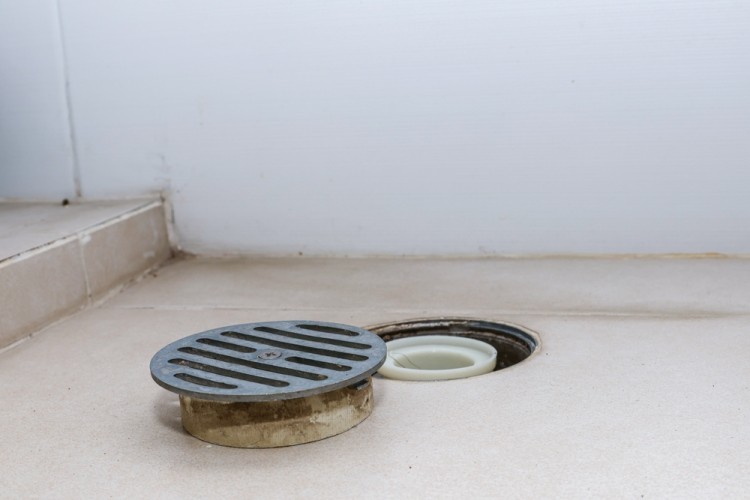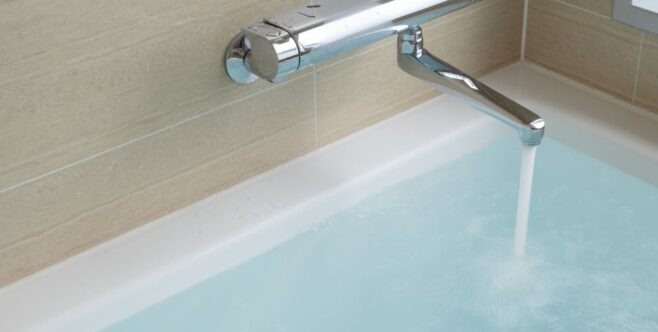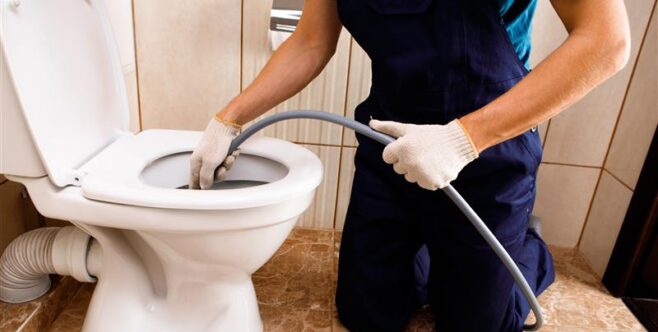What is Plumber’s Putty and How Can You Use it Effectively? – DIY Plumbing Guide
Plumber’s putty is essential for creating watertight seals in plumbing projects. Learn about its uses, applications, and techniques to ensure your next project is leak-free.

Whether you’re a seasoned professional or a DIY enthusiast, plumber’s putty is an essential tool for anyone involved in plumbing. This versatile, playdough-like compound creates watertight seals that can be the difference between a successful plumbing job and a leaky mess.
Throughout this blog, we’ll dive deep into the most common uses, applications, and techniques of plumber’s putty. With this knowledge in toe, you’ll be able to get the solution you need for your next plumbing project.
What is Plumber’s Putty?
Plumber’s putty is a malleable substance that’s used to create watertight seals between two rigid surfaces. It’s a staple for professionals and DIY-ers alike because of its ease of use and effectiveness in preventing leaks. This is why some refer to it as easy as playdough!
Typically, plumber’s putty is used to seal areas around faucets, sinks, and tub drains. Once in place, its primary goal is to make sure that water doesn’t seep through and cause damage.
Here are the primary properties of plumber’s putty
Malleable: Easy to shape and apply.
Long-lasting: Remains pliable for years, providing a long-term seal.
Non-adhesive: Can be removed and reapplied as needed.
Where Can It Be Applied?
Its primary use is to create watertight seals for fixtures such as faucets, sink basket strainers, and shower and pop-up drains. This malleable compound is easy to apply and wipe away after installation, leaving no visible residue on the outside of the plumbing fixture.
When stored properly (with the lid sealed tightly), Plumber’s Putty can last up to two years from the manufacture date. However, due to its oil-based nature, it may also stain more porous surfaces such as granite, marble, quartz, and sandstone. For these types of surfaces, it’s advisable to use a stain-free plumber’s putty, which is oil-free and won’t leave stains. This allows you to maintain the integrity and appearance of your countertops and other surfaces while still benefiting from the reliable sealing properties of plumber’s putty.
Here are some common areas where plumber’s putty may be suitable:
- > Setting faucets
- > Sealing sink basket strainers
- > Installing shower drains
- > Sealing pop-up tub drains
Preparation
Using plumber’s putty effectively involves several steps, all of which are crucial for achieving a proper seal that holds. Remember, preparation is just as important as application, so make sure to follow these steps:
Surface Preparation: Before applying plumber’s putty, check and confirm that the surface is clean and dry. Any dirt, grease, or old putty residue can prevent the putty from adhering properly. So, in order to reduce leakage, it’s always a good idea to give the area another clean. Use a cloth to wipe away any contaminants and ensure the intended area is ready for application.
Portion Control: Remove the desired amount of putty from its container. It’s also important to seal the lid tightly after use to keep the unused putty clean and pliable. Prolonged exposure to air will dry out the putty and render it useless in the future.
Kneading: To make the putty more pliable and easy to work with, roll it in your hands. This warms the putty up and helps to ensure that it is evenly mixed. Overall, this process makes it much more effective and easy to apply.
Shaping: Roll the kneaded putty into a rope about ½ inch thick. The thickness of the rope can be adjusted based on the size of the area you’re sealing.
Application
Assuming you’ve followed the steps listed above, application is the next phase. To help your DIY efforts, we’ve compiled a quick guide from placement to adjustment and final storage. However, if the job appears to be too large or complex, reach out to a licensed plumber straight away.
Placement: Form a circle with the putty rope around the underside of the flange of the item you’re installing. Make sure that the circle is complete and that there are no gaps that could allow water to seep through.
Pressure Application: Position the item and press it firmly into place. The pressure will cause the putty to spread and create a watertight seal. Excess putty will ooze out from under the flange. This will indicate that you have applied enough to the chosen area.
Cleanup: Wipe away any excess putty with a cloth. Any excess putty will need to be cleaned up thoroughly to maintain a neat appearance and prevent any potential staining or damage.
Adjustment: In colder conditions, wait about 10 minutes after the initial installation and check if an extra turn is needed to secure the item properly. Cold temperatures can make the putty less pliable, so this step ensures a proper seal.
Storage: Store any excess putty back in the container and keep it free from any dirt or debris. Seal the container tightly to prevent the putty from drying out.
Key Differences Between Plumber’s Putty and Siliconised Caulk
While both plumber’s putty and siliconised caulk are used to prevent leaks, they have distinctly different properties and applications.
Plumber’s Putty is known for:
Remaining Soft: Can be modified after application.
Being Non-Adhesive: Not intended to glue things together but to create a seal.
Immediate Application: No drying time is required; fixtures can be used immediately after application.
Siliconised Caulk, on the other hand, is known for
- > Drying Hard: Forms a strong, permanent seal once dry.
- > Being Adhesive: Functions as a glue, making it difficult to remove once applied.
- > Flexibility: Remains flexible after drying, making it ideal for areas subject to movement or vibration.
- > Weatherproof: Suitable for both indoor and outdoor use, including areas exposed to UV rays.
Tools and Techniques
Working with plumber’s putty is generally straightforward and doesn’t require many specialised tools. However, having a few items on hand does make the process more smooth:
Putty Knife: A putty knife is useful for scooping out the putty from its container and spreading it evenly. It can also help in scraping away any excess putty after installation.
Clean Hands: The most important “tool” you’ll need. Rolling and shaping the putty into the desired form is best done with clean, dry hands.
Additional Tools: While not necessary for applying plumber’s putty specifically, having a comprehensive tool bag can be helpful. Tools like tongue-and-groove pliers, a basin wrench, and a pipe cutter can assist in broader plumbing tasks.
Precautions
While plumber’s putty is versatile, there are some precautions to keep in mind:
Material Restrictions: Avoid using plumber’s putty on plastic (PVC or ABS) and porous materials like granite, marble, or quartz unless it’s a stain-free variety. Regular plumber’s putty is typically oil-based and, therefore, will stain these materials.
Pressurised Connections: Plumber’s putty should not be used in pressurised connections, such as gasketed fittings or on pipe threads. It’s designed for non-pressurised seals only.
Safety: Always use gloves when working with plumber’s putty to avoid skin irritation. Ensure you work in a well-ventilated area to avoid inhaling any fumes.
Lifespan and Maintenance
One of the key advantages of plumber’s putty is its longevity. Unlike other sealants, it remains pliable for years, maintaining its ability to create a watertight seal. Here are some tips to ensure you get the most out of your plumber’s putty:
Clean Surfaces: Always clean the surfaces thoroughly before applying the putty. Dirt or grease can prevent a good seal from forming.
Proper Storage: Keep unused putty in an airtight container to prevent it from drying out.
Moderate Tightening: Avoid over-tightening fixtures, which can cause excessive stress on the putty and lead to premature failure.
When to Call in a Professional Plumber?
Plumber’s Putty certainly has its time and place for DIY projects, but it won’t always save the day. There are many instances where calling in a professional is vital. Let’s dive into some of these now:
Pressurised Connections and Gasketed Fittings: Plumber’s putty is unsuitable for pressurised connections or gasketed fittings, which require specialised sealants to withstand pressure. A plumber can ensure a secure, leak-proof connection.
Major Plumbing Installations or Repairs: Complex tasks like installing new piping systems or extensive remodels need precise measurements, specialised tools, and knowledge of local codes.
Persistent Drainage Issues and Clogged Pipes: Ongoing drainage problems often signal deeper issues like blockages or broken pipes. Plumbers use advanced tools to diagnose and resolve these effectively.
Water Quality Concerns: Discoloured, odorous, or strange-tasting water can indicate contamination or corroded pipes. Plumbers can test water quality and make necessary repairs to ensure safety.
Frozen or Burst Pipes: Frozen or burst pipes require immediate professional attention to prevent extensive water damage. Plumbers can safely thaw pipes and repair bursts to restore water flow.
If you’re dealing with any of these issues and need a plumber in Melbourne, you’re in great hands with MCN. Whether you’re after a plumber in Pakenham, South Yarra or Ringwood, we service the whole city. Our team is available 24/7, including same-day services for any calls before 10:30 AM. Reach out to us now for any urgent issues!
Blocked Drains Melbourne can lead to significant plumbing issues, from slow drainage to unpleasant odors and potential water damage. Common causes include debris buildup, tree root intrusion, and foreign objects. Addressing these problems quickly is essential to prevent further complications. Our expert team provides efficient solutions to clear blockages and restore proper drainage, ensuring your plumbing system runs smoothly.
FAQs
What is plumber’s putty and what are its primary uses?
Plumber’s putty is a malleable compound that creates watertight seals in plumbing, particularly around faucets, sinks, and tub drains. Its ease of use and effectiveness in preventing leaks make it a staple for professionals and DIY projects.
Where can I buy plumber’s putty and how much does it cost?
Inexpensive and readily available, you can find it at hardware stores like Bunnings and many other home improvement and plumbing supply stores. Prices typically range from less than $10 for a small container to slightly more for larger quantities.
Can it be used on all types of surfaces?
It’s not suitable for porous materials like granite, marble, quartz, and sandstone. A stain-free version is recommended for these materials to prevent staining.
How do you properly apply plumber’s putty?
Clean and dry the surface, then knead the putty until pliable and form a rope to circle the flange of the item being installed. Press the item firmly into place to spread the putty and create a seal, then wipe away any excess.
When should you avoid using this compound and consider other options?
Avoid using it on plastic or in pressurised connections, as it’s designed for non-pressurised seals only. For complex or major plumbing installations, it’s advisable to call a professional plumber.

 0420 102 198
0420 102 198


